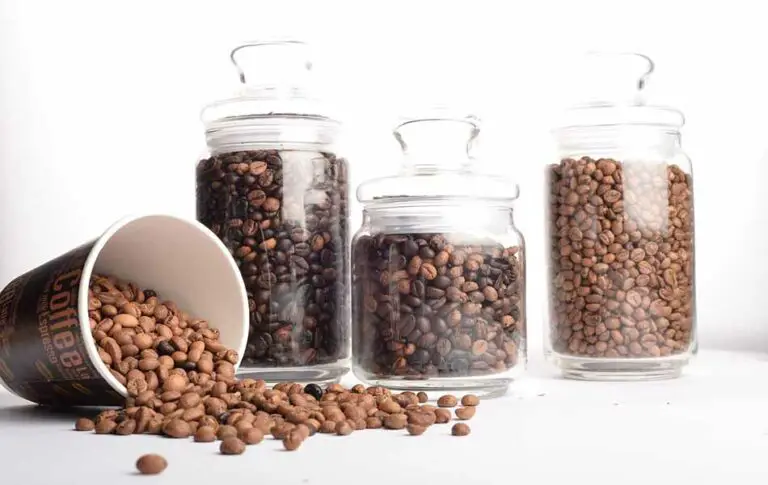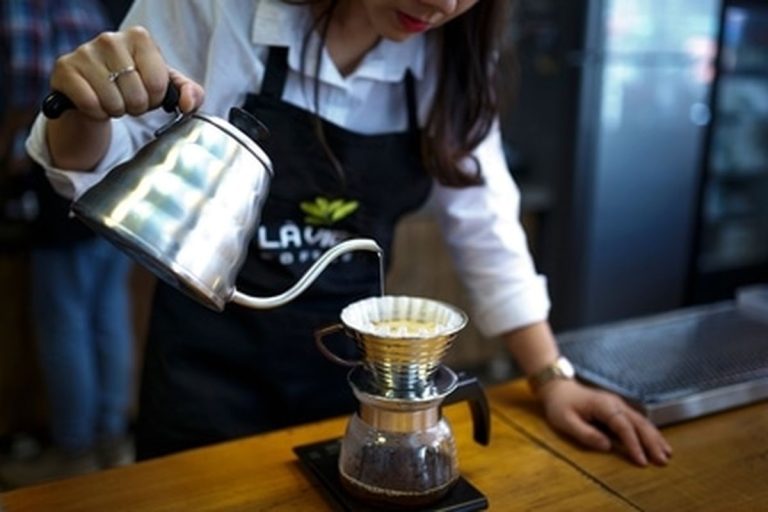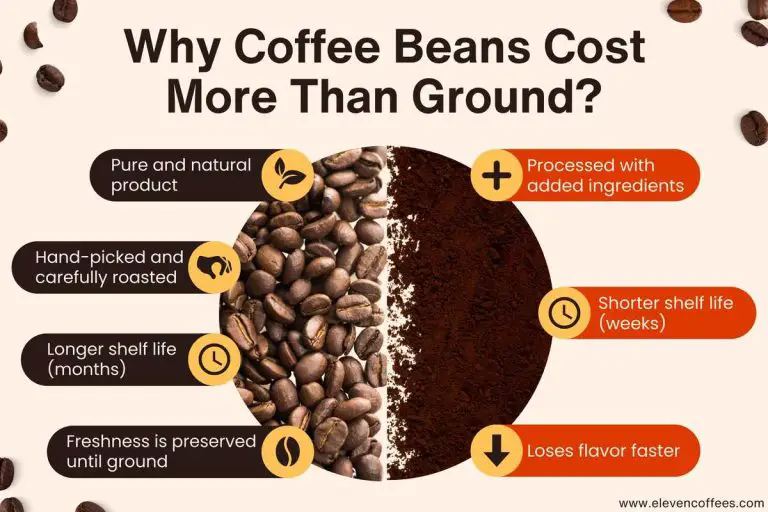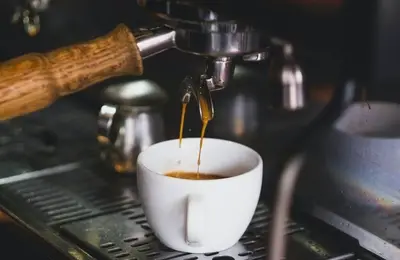The Complete Guide to Cold Brew Coffee
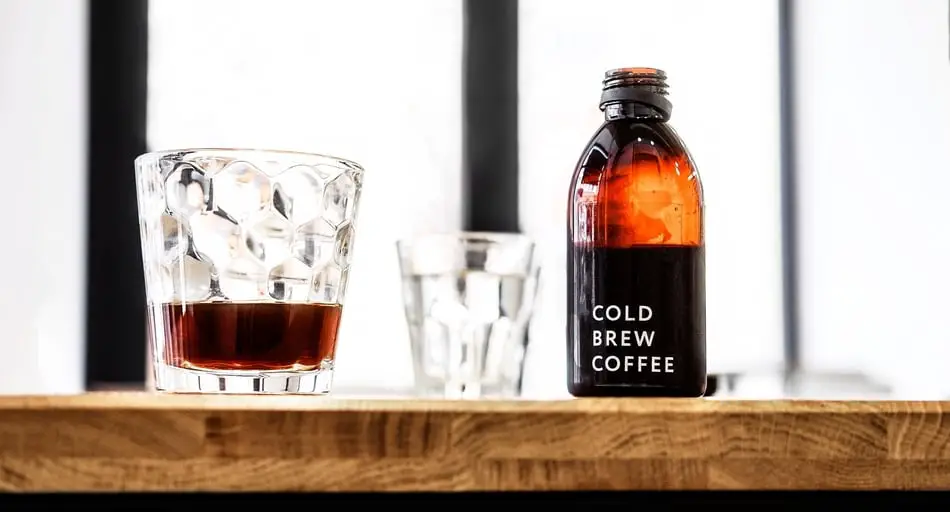
Over the last decade, cold brew coffee has become a household name, appearing on cafe menus all over the world. But what exactly is cold brew coffee?
Cold brew is a coffee beverage made by combining large amounts of ground coffee with cold water to create a concentrate. The mixture is left to steep for up to 24 hours, after which it’s filtered and refrigerated. The drink is then diluted with water or milk and enjoyed.
No one likes drinking an old cup of coffee that’s gone cold. So why has cold brew coffee become so popular?
Cold brew coffee explained
Unlike regularly brewed coffee that uses hot water, cold brew coffee is made using cold water.
Cold brew coffee is traditionally made by immersing medium to coarsely ground coffee in cold or room temperature water and leaving to infuse anywhere between 12 to 24 hours.
A lesser-used alternative to preparing cold brew is the slow drip method. Rather than combining all of the coffee and water, the water is added gradually to the ground coffee over the course of several hours.
Such a long brew time is necessary for cold brew as cold water requires a lot more time to extract the flavours from the ground coffee.
Once the coffee and water have had sufficient time to infuse, the drink is usually filtered with a cloth or paper filter. The drink is stored in the fridge where it will keep for up to one week.
Very high ratios of coffee to water are used to make cold brew. The resulting drink is a concentrate that needs to be diluted with water or milk.
A typical coffee to water ratio used to make cold brew is 1:8 (125g of coffee per litre of water) whereas ratios for hot filter coffee is around half that at 1:17 (60g/L).
Cold brew has mellower and more muted flavours than coffee brewed with hot water, and it is often described as being smoother in taste due to its decreased bitterness.
Nitro cold brew coffee is becoming more and more popular and is increasingly found on cafe menus. Nitro cold brew is regular cold brew coffee that is infused with nitrogen. The drink resembles the appearance of Guinness, an alcoholic beverage also infused with nitrogen.
Not only does nitro cold brew look very cool, but it actually improves the taste. Read on to find out more about nitro cold brew.
What does cold brew taste like?
Due to how cold water infuses with coffee, cold brew tastes sweeter than hot coffee due to its lack of bitterness and less noticeable acidity. The flavour and aroma are less intense, displaying bold and heavy flavours such as chocolate and nut.
Brewing coffee with cold water produces a more rounded and muted flavour profile with less distinguishable flavours and aromas.
Cold brew works very well when combined with milk. Despite its lack of bitterness, many like to add sugar to boost cold brew’s flavour.
Some people with a sensitivity to acid claim that cold brew is easier on the stomach because of being lower in acidity; however, recent findings dispute this claim.
The history of cold brew
The earliest record of cold brew coffee is from 17th century Japan. Cold brew coffee was popularized in the city of Kyoto, where the drink became known as Kyoto-style coffee.
Tradition has it that cold brew was introduced to Japan by Dutch sailors. The sailors carried large amounts of cold brew onboard to give them a caffeinated energy boost on their long voyages.
The city of Kyoto created its own brewing method known as Kyoto-drip. The method is still used today but has become known simply as slow drip. The process involves slowly dripping water over ground coffee to produce a concentrate.[1]
By the 1800s, cold brew coffee had spread throughout Asia, Europe and North America.
Cold brew acted as a type of instant coffee. Families would make batches of cold brew concentrate that they would later combine with boiling water to make an instant cup of coffee.[2]
In 1964, Todd Simpson, a chemical engineering student at Cornell University, travelled to Peru to source coffee plants. There, he came across cold brew coffee made using an ancient Peruvian process.
Upon his return, he came up with the idea of making his own type of coffee-brewing equipment for cold brew coffee, which was patented as the Toddy Cold Brew System.[3]
Cold brew really took off around a decade ago when Stumptown Coffee Roasters based in Oregon decided to start bottling their cold brew coffee.
Initially, the cafe would make a batch of cold brew and serve it to customers the following day. However, they were never able to keep up with demand.
In March 2011, Stumptown produced their first stubby bottles, which were delivered to their Portland cafes. The response was huge, and people’s love of cold brew only grew and grew.[4]
So great has been the cold brew wave that the coffee chain behemoth Starbucks adopted the drink in 2015, reporting a 20 percent surge in iced drink sales because of it.[5]
Due to the demand for cold brew within the coffee industry, many other large chains have followed Starbucks in offering cold brew coffee on their menu too.
In 2016, Starbucks also introduced nitro cold brew coffee into some of its stores, which has also become a hit.[6]
How is cold brew made?
The most simple way to make cold brew coffee is by infusing cold water with large quantities of medium to coarsely ground coffee and leaving to steep for between 12 to 24 hours.
Steeping
A steep time of 12 hours will produce a coffee with more acidity and a thinner body. A steep time of 24 hours will produce a more rounded coffee with increased body.
The coffee can be left to steep at room temperature or can be placed in the fridge. Steeping in the fridge slows the rate of extraction and therefore has to steep for a slightly longer period of time.
Specialized equipment isn’t necessary in order to make cold brew. Tupperware containers are a great choice, and they have the advantage of being able to brew larger quantities.
Smaller quantities of cold brew can be prepared using a French press, Clever Dripper or AeroPress. Many cafes use Toddy brewers for brewing as the specially designed Toddy filter makes filtration simple.
Brew ratios
Brew ratios for cold brew vary, but it’s usually at least twice as strong as hot coffee. A typical coffee to water ratio is 1:8, which is 125g of coffee per litre of water.
As cold brew is almost always diluted in water or milk, some prefer to make their cold brew even more concentrated at of ratios of 1:4 (250g of coffee per litre of water).
Grind size
Most recipes for cold brew coffee call for coarsely ground coffee; however, a medium grind produces better results.
A medium grind size is preferable for cold brew as cold water does not extract ground coffee as efficiently as hot water does.
Because of how hard cold water has to work, a finer grind produces better results as the cold water can more easily make its way into the coffee grinds.[7]
Set your coffee grinder to around half way for best results or look for pack of coffee displaying ‘medium grind’ or ‘filter grind’.
Filtration
Once the coffee has steeped sufficiently, it needs to be filtered. The best and most popular choices are filtering with cloth or paper.
Cloth filters allow the oils inherent in coffee to pass through, which some prefer as it gives the coffee a greater body and mouthfeel.
Paper filters make for an extremely clean cup of coffee. Filtering the oils creates a clarity in flavour but at the expense of a thinner body.
Metal filters absolutely can be used if you don’t have access to cloth or paper filters, but it will cause some issues.
The use of metal filters means that there will be ground coffee sediment at the bottom of the batch, and some will make it into your glass when you pour.
This is much like you experience when you drink French press coffee. However, the issue arises when you come to mix the cold brew with water or milk.
Stirring the drink whips up the sediment at the bottom of the glass, and it takes a little while to settle to the bottom again.
But cloth filters are easy to find and should be available at your local supermarket, so using a metal filter should be a last resort.
Refrigeration
After filtering the cold brew coffee, it needs to be stored in the fridge. Cold brew will stay fresh for up to seven days.
Make sure to only dilute as and when you enjoy a glass. Diluting the entire batch will shorten its shelf life.
As sugar takes a while to dissolve in cold liquid, it’s a good idea to sweeten the entire batch.
Slow drip cold brew
Kyoto-style slow drip is an alternative to the traditional method of preparing cold brew. The method involves slowly dripping cold water over a bed of ground coffee, which then passes through a filter. The result is a cold brew that is brighter but with less body.
You may have seen one of these cold brew devices at your local specialty cafe. They look like something from a chemistry lab.
Although the contraption looks intimidating, they’re actually quite simple. A valve connects to a water reservoir that controls the flow of water travelling into the bed of ground coffee.
The water spends several minutes flowing through the coffee grounds, extracting its flavours on its way through. It then passes through a filter and finally into a vessel that collects the cold brew coffee.
Slow drip is popular in Japan, where it was first invented, and it’s definitely one for cold brew connoisseurs. The flow rate has to be adjusted to account for the ever-lowering pressure from the water reservoir as the water level decreases.
Despite the extra work involved, the brewer does have a huge advantage. Whereas cold brew made by immersion may take as long as 24 hours, slow drip cold brew is made as quickly as 3 to 6 hours.
Nitro cold brew
Nitro cold brew coffee is made by charging cold brew or iced coffee with nitrogen. The tiny nitrogen bubbles make for a smoother drinking experience and impart a noticeable sweetness into the drink.
Apart from the tiny nitrogen bubbles giving the coffee a creamy body and adding sweetness, it’s thought that the nitrogen infusion may also slow the degradation of the coffee compounds caused by oxidation.
When coffee compounds break down through oxidation, it gives the coffee a bitter and sour taste. The nitrogen is likely making the coffee more stable because of driving out the oxygen.[8]
Nitro cold brew was invented by Nate Armbrust, a food scientist from Portland, Oregon. He invented the drink whilst working for the pioneers in cold brew, Stumptown.
Looking to improve upon the taste of cold brew, he took the idea from nitrogen-infused beer.[9]
Nitro cold brew has grown hugely in popularity in recent years. It can now be found at many cafes where it’s stored under pressure in a keg beneath the bar, ready to pour from a tap.
But nitro cold brew doesn’t have to be something you only enjoy at your local cafe. It can be made at home, and the great thing is that it’s not difficult to make. Nitro whippers used to charge the cold brew can be easily found at very reasonable prices online.
Making nitro cold brew is definitely a show stopper and something to impress your friends and family with. Check out our easy recipe for nitro cold brew.
What is the best type of coffee for cold brew?
Due to how cold water infuses with coffee, South American coffees work excellently well. Coffees from Brazil and Colombia in particular, with their flavours of chocolate and nut, produce a very tasty cup of cold brew.
Selecting a coffee for cold brew could be compared to selecting a wine for cooking. You definitely have to use something you wouldn’t mind drinking, but there’s no point using something extravagant.
Therefore, don’t go buying premium coffee to make cold brew. The flavours and aromas of fragrant coffees from Africa, such as those from Ethiopia or Kenya, become lost when brewed with cold water.
Buying 100 percent arabica coffee is key to making tasty coffee. If the packet doesn’t display the words ‘100 percent arabica’, then it probably contains the inferior robusta variety of coffee, which is a lot harsher in taste with overwhelmingly bitter flavours.
The best coffees can be found from specialty roasters. These days, most major cities have at least one specialty coffee roaster. But if not, take a look online as they post straight to your door.
Specialty coffee is far superior to anything you’ll find at the supermarket, and it’ll almost certainly be pure arabica.
Is cold brew the same as iced coffee?
Cold brew is not the same as iced coffee. Iced coffee is prepared using hot water which is instantly chilled over ice. Whereas cold brew is traditionally prepared by immersion, iced coffee is usually prepared in percolation (pour over) brewers such as the Chemex, Hario V60 or Kalita Wave.
Due to being prepared with hot water, iced coffee does not stay fresh for very long. Iced coffee is usually drunk immediately after preparation or within a few hours at the most.
On the other hand, cold brew coffee can be stored in the fridge and enjoyed up to a week after preparation.
Cold brew or iced coffee: Which is better?
Iced coffee is considered superior in taste to cold brew because of how coffee infuses more readily in hot water. However, cold brew is more practical in cafe settings as large batches can be made and sold quickly.
Not only is cold water not able to extract as much caffeine as hot water, but it also isn’t able to extract as many flavour compounds. This is why cold brew coffee always tends to have the same muted flavour profile with aromas of chocolate and seemingly low levels of acidity.
As iced coffee is brewed with hot water and immediately chilled over ice, all the flavours present in hot coffee are present in iced coffee, and for this reason it’s considered superior in taste.
Using a premium coffee with crisp acidity or one with floral aromas get completely lost during the cold brew preparation. In contrast, these flavours shine in iced coffee.
A drawback to iced coffee is that the drink has to be made to order and has a short shelf life. On the other hand, cold brew can be prepared in huge quantities, which is ideal for cafes that want to serve customers quickly to increase profits.
One instance where cold brew trumps iced coffee is when using poor quality, darkly roasted coffee. The iced coffee will contain high levels of bitterness whereas the same coffee prepared as cold brew will not.
Another factor that some find pleasant is cold brew’s seemingly lower level of acidity. Whilst iced coffee displays the same acidity as hot coffee, cold brew is definitely less lively, leading many to assume that it’s lower in acidity. But is it?
Is cold brew really lower in acidity?
Cold brew and hot coffee actually contain comparable levels of acidity. Both cold brew coffee and hot coffee have a pH between 4.85 to 5.13. The confusion arises over the differing levels of titratable acidity.[10][7]
Just as caffeine is more soluble in hot water than cold, so too is true for acidic compounds. However, the difference in levels is negligible and would not make a great deal of difference to those suffering with acid reflux or gastroesophageal reflux disease (GERD).
So why the confusion? Cold brew definitely tastes less acidic, right?
Research into the acidity in coffee has shown that pH level isn’t very closely linked to how we perceive the acidity.[7]
The confusion lies in something known as titratable acidity. Titratable acidity measures the total amount of acids present in a liquid and is better correlated with the way our palate perceives acidity.
Cold brew has lower titratable acid levels than hot coffee, which leads us to perceive the drink as less acidic.[11]
If you wanted to enjoy cold brew because you thought it was a lot lower in acidity, then there is a solution.
Low acid coffee is becoming increasingly available and can be purchased online. Low acid coffee is definitely the answer if you suffer from acid reflux or GERD.
The only drawback is that low acid coffee is a lot pricier as it’s a specialty item. Prices start on US Amazon from $22 for a 2.5lb bag.
How much caffeine does cold brew have?
| Beverage | Caffeine per 100ml (3.38oz) |
|---|---|
| Espresso | 180mg |
| Cold brew (undiluted) | 70mg |
| Filter coffee | 40mg |
| Cold brew (diluted) | 35mg |
| Red Bull | 32mg |
| Instant Coffee | 26mg |
| Coca-Cola | 10mg |
On average, an 8oz (237ml) cup of cold brew concentrate contains 83mg of caffeine, which is almost twice as much caffeine as hot coffee. However, cold brew coffee is usually diluted with equal parts water or milk, reducing its caffeine content by half.
As such, diluted cold brew coffee contains slightly less caffeine than filter coffee brewed with hot water.
The confusion surrounding cold brew’s supposedly high caffeine content is due to the high coffee to water ratios used to make cold brew. Left undiluted, cold brew certainly does contain more caffeine; however, few drink it without diluting.
Further lessening cold brew’s caffeine content is the fact that cold water is not able to extract as much caffeine as hot water due to caffeine being more soluble in hot water.[12]
Is it OK to heat up cold brew coffee?
Heating cold brew is fine to do; however, it may cause the drink to become bitter, especially if it has been mixed with milk.
To avoid imparting bitterness, heat the cold brew gently, combining with milk afterwards. Heating coffee mixed with milk will definitely lead to high levels of unpleasant bitterness.[13]
A great alternative to heating cold brew is to make an extra-strong concentrate that you dilute with freshly boiled water. Use a coffee to water ratio of 1:3 – 1:4 (333g – 250g per 100ml) to create a very strong cold brew concentrate that can stand be heavily diluted.
The advantage of this is that the extra-strong cold brew concentrate acts as a form of instant coffee that just requires adding boiling water. It also eliminates the risk of imparting bitterness to the drink.


